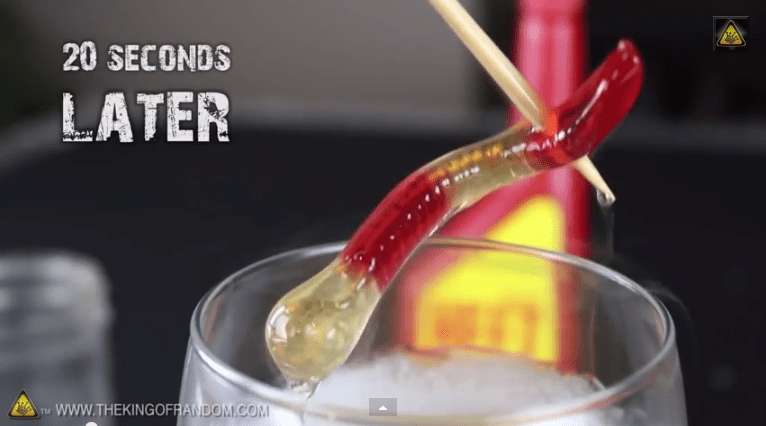
What happens if you insert a coin into a block of dry ice? The result is pretty neat. The coin seems to dance about and sing, vibrating back and forth in quite an impressive rate. Ultimately, the noise that is produced when metal comes into contact with dry ice results from something that is known as the Bernoulli principle. It has an impressive name, but it is just the principle that describes what happens when a gas moves.
Dry ice is one of the few substances that sublimes (vaporizes) from a solid state. It is frozen carbon dioxide which, at pressures below 5.13 atm and temperatures below −56.4 °C (−69.5 °F), changes from solid to gas with no liquid transitory state. This means that dry ice gives off a kind of fog when exposed to average temperatures.
Ultimately, the amount of movement of the molecules separates solids, liquids, and gasses. In gasses, molecules move about rather freely. In liquids, they are slower and more confined, while in solids they move very little (comparatively). Since dry ice goes from a solid to a gas, there is a rather dramatic pressure drop as the molecules move about and are released.
Thus, the dry ice vaporizes into carbon dioxide gas when a comparatively warm metal comes in contact with it, creating a change in pressure and causing the metal (a coin, in this case) to vibrate and dance. In the below videos, you can see some awesome effects of dry ice in action.
Note: If you try any of this your self, please know that dry ice is extremely cold, and touching it can cause instantaneous frostbite. So please do some research into necessary protective gear or work with a knowledgeable expert. Also, some of the reactions that are shown in the videos are rather dangerous if you are unfamiliar with the substances being used (like the experiment with magnesium). Do not try these particular experiments is you haven’t worked with the substances together before and are unfamiliar with how they react.
Remember, trying sciency things is only fun if you live to talk about your results.

Other Awesome Experiments:
